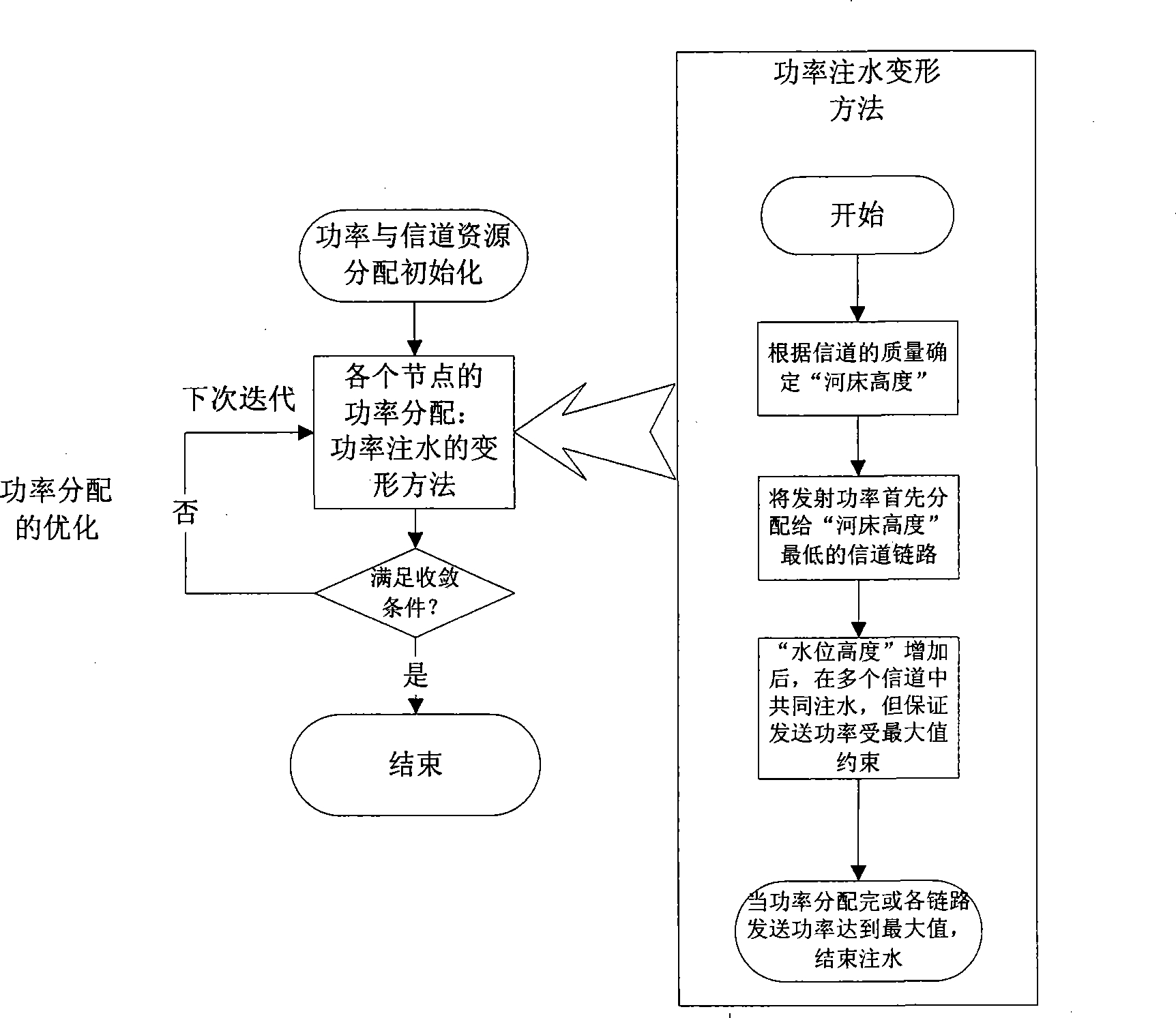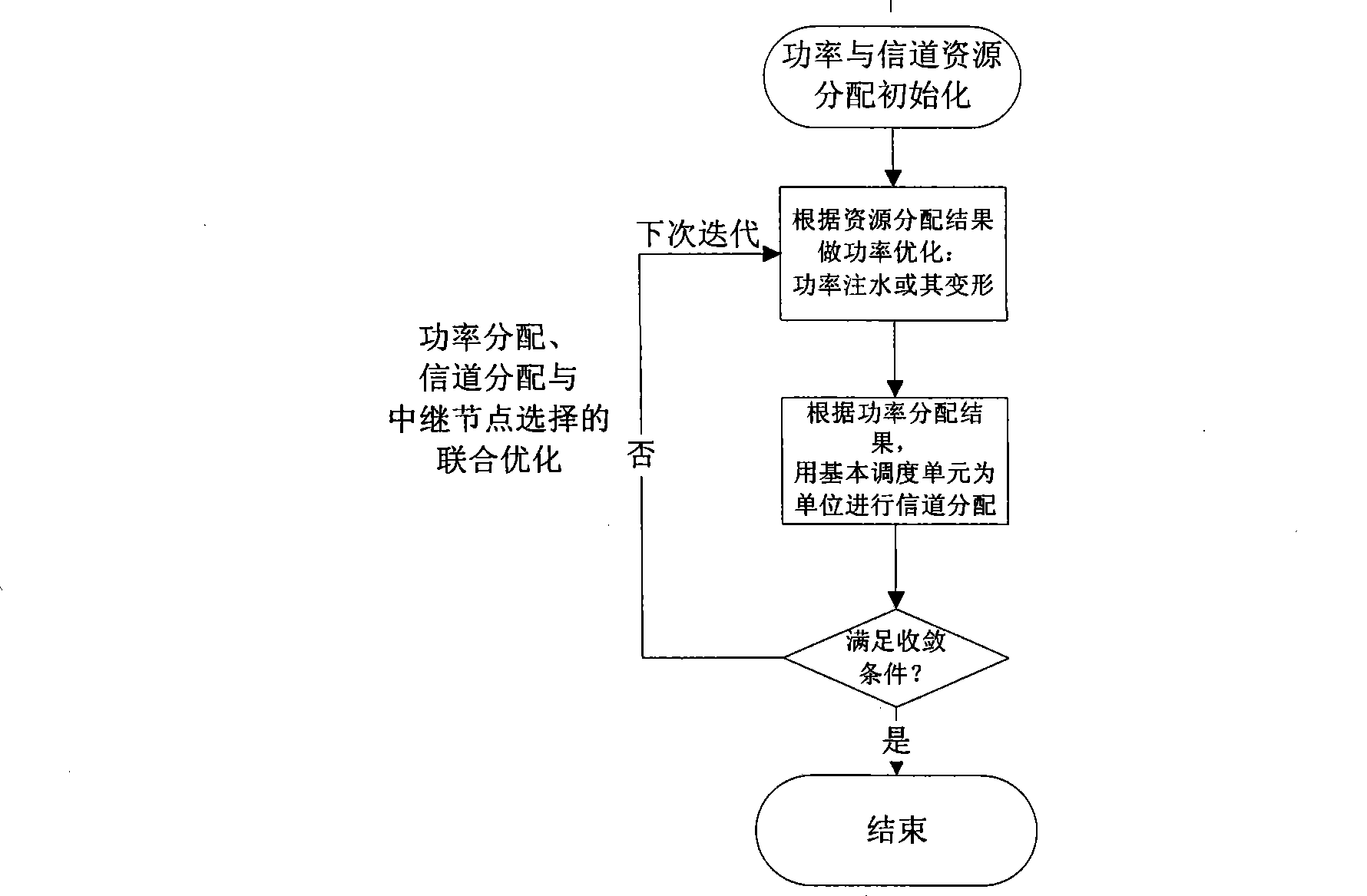Power distribution, channel distribution and relay node selection combined optimization method
A channel allocation and relay node technology, applied in power management, wireless communication, transmission control/equalization, etc., can solve problems such as slow convergence speed of convex optimization methods
- Summary
- Abstract
- Description
- Claims
- Application Information
AI Technical Summary
Problems solved by technology
Method used
Image
Examples
Embodiment 1
[0038] Consider the joint optimization method of relay node selection, power allocation and resource allocation in time division multiple access (TDMA) relay communication system. In this relay communication system, each relay node adopts two relay transmission modes: Non-regenerative Decode and Forward (NDF) and Amplify and Forward (AF). And each relay node adopts a half-duplex mode, that is, the relay node uses two orthogonal channels for receiving information sent by the source (the first hop) and forwarding the information to the destination (the second hop).
[0039] The joint optimization method of relay node selection, power allocation and resource allocation in this communication system is specific, such as figure 2 shown, including the following steps:
[0040] (1) System initialization: distribute the transmission power and channel resources of each source and relay node in the wireless relay communication system to each link in an even or random manner;
[0041] ...
Embodiment 2
[0054] Consider the joint optimization method of relay node selection, power allocation and resource allocation in frequency division multiple access (FDMA) relay communication system. In this relay communication system, each relay node adopts two relay transmission modes: Regenerative Decode and Forward (RDF) and Compress and Forward (CF). And each relay node adopts a half-duplex mode, that is, the relay node uses two orthogonal channels for receiving information sent by the source (the first hop) and forwarding the information to the destination (the second hop).
[0055] The joint optimization method of relay node selection, power allocation and resource allocation in the communication system, such as image 3 As shown, it specifically includes the following steps:
[0056] (1) System initialization: distribute the transmission power and channel resources of each source and relay node in the wireless relay communication system to each link in an even or random manner;
[...
Embodiment 3
[0068] Consider the joint optimization method of relay node selection, power allocation and resource allocation in Orthogonal Frequency Division Multiple Access (OFDMA) relay communication system. In this relay communication system, each relay node adopts two relay transmission modes: Regenerative Decode and Forward (RDF) and Compress and Forward (CF). And each relay node adopts a half-duplex mode, that is, the relay node uses two orthogonal channels for receiving information sent by the source (the first hop) and forwarding the information to the destination (the second hop).
[0069] The joint optimization method of relay node selection, power allocation and resource allocation in this communication system, the flow chart is shown in Figure 4 , including the following steps:
[0070] (1) System initialization: distribute the transmission power and channel resources of each source and relay node in the wireless relay communication system to each link in an even or random ma...
PUM
 Login to View More
Login to View More Abstract
Description
Claims
Application Information
 Login to View More
Login to View More - R&D
- Intellectual Property
- Life Sciences
- Materials
- Tech Scout
- Unparalleled Data Quality
- Higher Quality Content
- 60% Fewer Hallucinations
Browse by: Latest US Patents, China's latest patents, Technical Efficacy Thesaurus, Application Domain, Technology Topic, Popular Technical Reports.
© 2025 PatSnap. All rights reserved.Legal|Privacy policy|Modern Slavery Act Transparency Statement|Sitemap|About US| Contact US: help@patsnap.com



